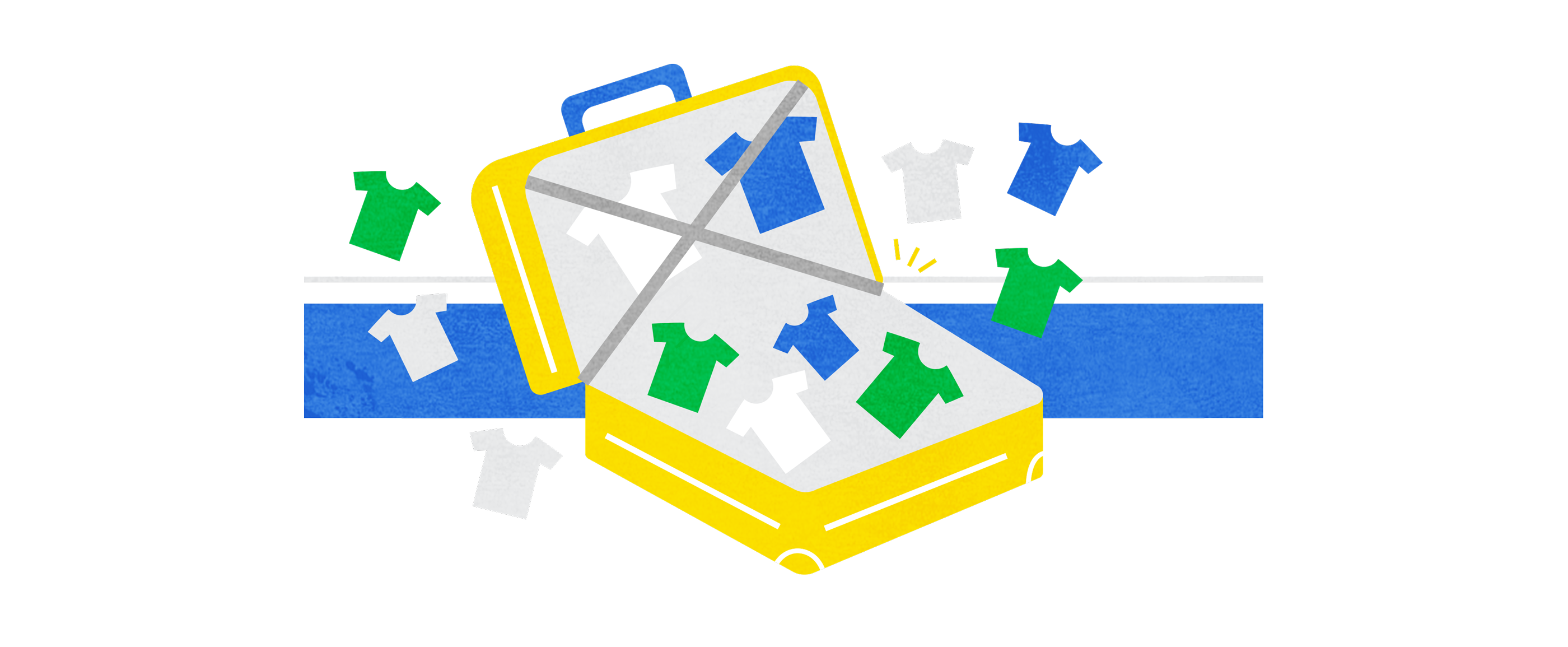It’s hard to imagine now how the Starbucks or McDonalds of the world ever had humble beginnings. But every business has to start somewhere. As the old, ancient saying goes, “started from the bottom, now we’re here.”
Just like writers read to improve their craft, learning how apparel empires started can help your clothing brand. Here are 4 clothing brands that went from no-name to big-name: Jac Vanek, Johnny Cupcakes, Nasty Gal / Sophia Amoruso, and Life is Good.

Jac Vanek
WHO: Jac Vanek is 29-years-old and already the CEO of her own clothing company. She is credited being one of the “original bloggers” to gain a large audience through blogging.
WHAT: Vanek has gone from selling bracelets at music fests to owning her own successful clothing line that’s sold both on her site and now at Zumiez.
STORY: Vanek’s story started at 15-years-old when she gave up a place on her school’s cheerleading squad to devote more time to her business. And talk about humble beginnings – she started her company with a $200 loan from her parents.
She started selling rubber bracelets that said “RUTHLESS” at music festivals. This also happened to be a phrase that represented the struggle Vanek faced in selling them at music festivals. She was in a dude’s world, and all too often wasn’t taken seriously. In an interview with Girl Talk HQ, she said, “Do what your heart tells you to do. Try not to let anyone else get to you because people are always going to have some kind of an opinion and as long as you believe in what you’re doing and you’re following your passion, and being real to yourself, thats all that matters.”
The payoff? She’s CEO of a clothing brand that’s worn by celebrities like Miley Cyrus and Demi Lovato. What’s more? None of that original $200 loan from her parents went towards advertising – her brand has been all word of mouth.
TAKEAWAYS:
- Niche: Jac Vanek found her niche – the music festival crowd, where she targeted specific fests like Warped Tour. Finding her niche was how she spread the word and sold her product.
- Do you: She didn’t let anyone keep her from pursuing her passion. She rolled with what she loved and found people who also loved the same things she was creating.
- Foot in the Door: She got a lot more access to her niche audience and festivals by taking odd jobs at concerts and festivals to get her foot in the door. Sometimes it’s not about jumping right into asking if you can set up a kiosk and sell your stuff. Sometimes, it’s about finding that loophole – an odd job at a festival, for example – to get a leg up. Want to start an a company like Jan Vanek? Artist Shops are an easy way to create your own apparel brand.
(Info via Billboard)

Johnny Cupcakes
WHO: Johnny “Cupcakes” Earle is the founder of Jonny Cupcakes – a company that started as a nickname that turned into a clothing brand featured in Forbes, NPR, and Businessweek.
WHAT: Johnny Cupcakes is a clothing brand known for its cupcakes-and-crossbones logo. Featured in This is the End with Seth Rogan and James Franco, the brand is unique in how they sell their product. The design of their brick and mortar stores look like bakeries. Their packaging utilizes personalization, and their sell their t-shirts as limited editions.
STORY: It all started with the nickname “Johnny Cupcakes,” given to Earle by some coworkers. He decided, for the hell of it, to make a t-shirt of the nickname for himself, featuring a cupcake and crossbones logo.
It wasn’t long before people started asking for them. So he made some for his friends and co-workers. Then his bandmates. Soon, more and more people were asking for the shirts. He started selling them out of a suitcase in his car when he went on tour with his band.
Johnny Cupcakes began growing, and became something of a family-run business. He and his dad customized their first store, and the whole family helped pack the t-shirts. What started as a silly joke became an entrepreneurial endeavor, and a super successful one. Known for doing pop-up shops, selling limited edition tees out of suitcases, and filling orders with free gifts and messages.
TAKEAWAYS:
- The customer comes first: It’s amazing how much time Johnny and company put into making the Johnny Cupcakes experience a memorable one for customers. Some of his shops have ’80s movie nights with limited edition tees you can only get there. His stores look like bakeries and even give you your tee in a baked goods box. They throw in little freebies when they send out online orders. Johnny best summed it up in Forbes when he said, “The Rainforest Cafe might not have good food, but everyone goes there because its fun.”
- Word of mouth: Like Jac Vanek, Johnny spent little money on advertising, preferring to put it towards customer experience. Give ’em something to talk about – even if its as simple as drawing a custom doodle for someone who places and order.
- “For a limited time only!”: One big draw of Johnny Cupcakes is that they are always changing the products they offer. It keeps people checking out what’s new and puts the “buy it now or lose it forever” pressure on! This is super easy to do with Artist Shops!
(Info via Johnny Cupcakes, Chopdawg, NPR, and Forbes)

NASTY GAL’s Sophia Amoruso
WHO: You might’ve heard of “Girl Boss” author and Nasty Gal CEO Sophia Amoruso. She’s another young CEO who got her start selling vintage apparel on eBay and Myspace.
WHAT: Nasty Gal is an online clothing brand that went from an eBay shop to an overnight sensation. As Amoruso told The New York Times, “Nasty Gal is the fastest-growing retailer in the country.”
STORY: Amoruso got her start in apparel as an unemployed college dropout who took a job scanning student IDs for the health insurance. In other words, a now ultra-successful CEO with the humblest of starts. She decided to start selling vintage clothing on ebay (to make rent) and got good at it – like, really good at it.
She would find vintage items at secondhand shops, take photos that sold the lifestyle she wanted to represent, and the business took off. She marketed her shop on Myspace (which got her suspended from eBay) by reaching out to fans of Nylon magazine and brands that matched her aesthetic.
She’s since turned Nasty Gal into its own business and eCommerce empire, and that success has translated the Girl Boss book, podcast and Netflix series.
TAKEAWAYS:
- Photos. Are. Everything: Amoruso attributes a lot of the company’s success to meticulous lifestyle shots that sell “the fantasy.” Growthhackers reported that “when she insisted that a wrap dress with lackluster sales be photographed on one of Nasty Gal’s most popular models, the dress saw a 400% increase in sales.” Sell the lifestyle, the look, the fantasy your niche craves by showing it with photography. And make your photos purposeful.
- Notice what works: Amoruso paid attention to which photos and models garnered more attention and used those to optimize sales.
- Find your niche in related publications or brands: Amoruso reached out to fans of brands that represented the same lifestyle she wanted to sell – it’s a great way of finding and appealing to your audience.
(Info via Growthhackers and NYTimes)

Life is Good
WHO: The lovable and ultra-famous beach-vibe brand, “Life is Good” featuring that slogan and their iconic face of the brand, Jake.
WHAT: A super feel-good clothing brand all about positivity and spreading the joy.
STORY: ““Life is Good” came from a joint family effort. Brothers Bert and John Jacobs began selling t-shirts out of their car, going on road trips across the country and selling their apparel in the streets, around college dorms, etc. They didn’t lose much money on these trips because they didn’t spend much money, sleeping in their van and sneaking into college cafeterias for meals.
As they did this, word spread and people started diggin’ their stuff. When the shirts started selling out, they went full steam ahead in building the business. At the time, “Life is Good” wasn’t even their brand name, or their main design. When the slogan started doing well, they changed their name from “Jacob’s Gallery” to “Life is Good,” and an empire was born.
One of the greatest things about these two brothers? They don’t care about the clothing industry, as alisterpaine reported. They care about the message it spreads and positivity it brings. The brothers told Forbes, “Weave a larger purpose into your business from the start.”
TAKEAWAYS:
- Have a message: Life is Good has a very positive connotation to it, and the brothers are consistent in saying that their brand is to spread good vibes. “Life is Good” has become a slogan as recognizable as the golden arches. Have a message or lifestyle that transcends selling apparel, using apparel as a vehicle to sell it – not the other way around. Then stay on that brand to keep it consistent and make it your “thing.”
- Hitting the streets:They took time and gave up a lot to do road trips selling their product. Hitting up specific niches that would spread the word and get their designs noticed.li>
Info via alisterpaine, Forbes, and CNBC
Sign up for your own Artist Shop here and start your clothing brand today!
Illustrations by Katie Lukes
</


